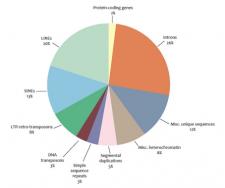ExAC Project Pins Down Rare Gene Variants
By Nature Editorial,
Nature Editorial
| 08. 17. 2016
More than one million people have now had their genome sequenced, or its protein-coding regions (the exome). The hope is that this information can be shared and linked to phenotype — specifically, disease — and improve medical care. An obstacle is that only a small fraction of these data are publicly available.
In an important step, we report this week the first publication from the Exome Aggregation Consortium (ExAC), which has generated the largest catalogue so far of variation in human protein-coding regions. It aggregates sequence data from some 60,000 people. Most importantly, it puts the information in a publicly accessible database that is already a crucial resource (http://exac.broadinstitute.org).
There are challenges in sharing such data sets — the project scientists deserve credit for making this one open access. Its scale offers insight into rare genetic variation across populations. It identifies more than 7.4 million (mostly new) variants at high confidence, and documents rare mutations that independently emerged, providing the first estimate of the frequency of their recurrence. And it finds 3,230 genes that show nearly no cases of...
Related Articles
By Grace Won, KQED [with CGS' Katie Hasson] | 12.02.2025
In the U.S., it’s illegal to edit genes in human embryos with the intention of creating a genetically engineered baby. But according to the Wall Street Journal, Bay Area startups are focused on just that. It wouldn’t be the first...
Several recent Biopolitical Times posts (1, 2, 3, 4) have called attention to the alarmingly rapid commercialization of “designer baby” technologies: polygenic embryo screening (especially its use to purportedly screen for traits like intelligence), in vitro gametogenesis (lab-made eggs and sperm), and heritable genome editing (also termed embryo editing or reproductive gene editing). Those three, together with artificial wombs, have been dubbed the “Gattaca stack” by Brian Armstrong, CEO of the cryptocurrency company...
By Emily Glazer, Katherine Long, Amy Dockser Marcus, The Wall Street Journal | 11.08.2025
For months, a small company in San Francisco has been pursuing a secretive project: the birth of a genetically engineered baby.
Backed by OpenAI chief executive Sam Altman and his husband, along with Coinbase co-founder and CEO Brian Armstrong, the startup—called...
By Antonio Regalado, MIT Technology Review | 10.31.2025
A West Coast biotech entrepreneur says he’s secured $30 million to form a public-benefit company to study how to safely create genetically edited babies, marking the largest known investment into the taboo technology.
The new company, called Preventive, is...




